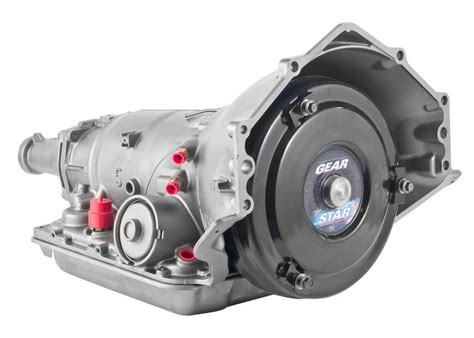4L60E Manual: Enhanced Performance & Reliability
The 4L60E automatic transmission, while ubiquitous in GM vehicles, often falls short of the performance and reliability demands of enthusiasts. Converting it to a manual configuration opens the door to significant upgrades, boosting both power handling and longevity. This article delves into the intricacies of this modification, exploring the performance gains, reliability enhancements, and the considerations involved in such an undertaking.
What is a 4L60E Manual Conversion?
A 4L60E manual conversion involves replacing the automatic transmission's internal components and control system with those designed for manual shifting. This eliminates the torque converter and the complex valve body, replacing them with a robust manual valve body and a mechanical linkage or cable system. This transition allows for precise gear selection, improved shift times, and ultimately, a more engaging driving experience.
Performance Benefits of a 4L60E Manual Conversion
The benefits of this conversion extend beyond just the driver's experience. The changes directly impact the transmission's ability to handle increased power and torque.
Increased Holding Capacity
The 4L60E's automatic components are not designed for the extreme pressures generated by high-performance engines. A manual conversion, particularly when coupled with upgraded internal parts, significantly increases the transmission's holding capacity. This prevents slippage and premature wear under heavy loads.
Faster Shift Times
Automatic transmissions inherently suffer from slower shift times compared to manual gearboxes. The manual conversion eliminates the delays associated with hydraulic pressure changes, resulting in crisper, faster shifts. This translates to improved acceleration and a more responsive throttle response.
Enhanced Control
Manual control over gear selection gives the driver precise control over engine speed and torque. This allows for optimized gear selection in various driving conditions, leading to improved fuel economy and enhanced performance.
Reliability Improvements with a 4L60E Manual Conversion
While the 4L60E is known for its occasional reliability issues in stock form, a well-executed manual conversion can actually improve its lifespan.
Reduced Heat Generation
The automatic transmission's torque converter generates significant heat, contributing to premature wear. Eliminating the torque converter in a manual conversion reduces heat build-up, improving the overall health of the transmission.
Stronger Internal Components
Manual conversions typically involve the installation of upgraded internal components such as stronger clutches, hardened shafts, and improved bearings. These upgrades enhance the transmission's durability and resistance to wear and tear.
Precise Gear Engagement
The precise nature of manual shifting minimizes the risk of harsh shifts and sudden jolts that can damage the transmission. This smoother operation prolongs the life of the internal components.
What are the potential downsides of a 4L60E manual conversion?
While the advantages are compelling, it's important to acknowledge potential drawbacks:
Increased Complexity & Cost
A 4L60E manual conversion is a complex and time-consuming process, requiring specialized tools and expertise. The cost of parts, labor, and potential unforeseen issues can be substantial.
Reduced Drivability in Certain Situations
While offering superior performance, a manual conversion may present challenges in situations requiring smooth, automatic gear changes, like slow-speed maneuvering or stop-and-go traffic. The driver must be skilled and comfortable with manual shifting.
Warranty Implications
The conversion will likely void any existing warranty on the transmission.
Frequently Asked Questions (PAA)
How much does a 4L60E manual conversion cost?
The cost varies widely depending on the specific parts used, the level of expertise required for installation, and the geographic location. It's advisable to obtain multiple quotes from reputable transmission specialists.
What are the best aftermarket parts for a 4L60E manual conversion?
Several reputable companies offer high-quality parts specifically designed for 4L60E manual conversions. Research is crucial to ensure compatibility and reliability. Choosing components rated for higher torque capacities is paramount.
Can I do a 4L60E manual conversion myself?
While technically possible, it is strongly discouraged for those lacking extensive experience with automatic transmissions and manual conversions. The process is highly complex and mistakes can lead to irreparable damage.
Is a 4L60E manual conversion worth it?
The decision of whether a 4L60E manual conversion is worthwhile hinges on individual priorities and resources. If enhanced performance and durability are paramount and the cost and complexity are manageable, the conversion can offer significant advantages. However, for those seeking simplicity and ease of use, maintaining the factory automatic transmission may be the better option.
This comprehensive overview outlines the essential aspects of a 4L60E manual conversion. However, thorough research and consultation with experienced professionals are strongly recommended before undertaking this significant modification.

